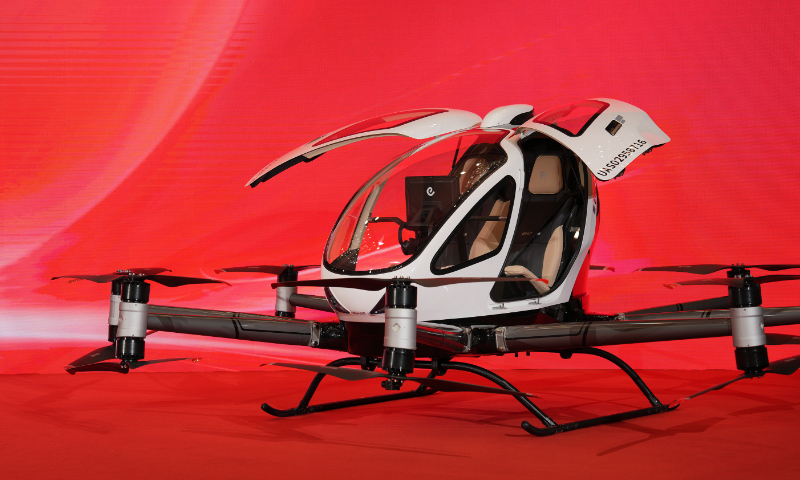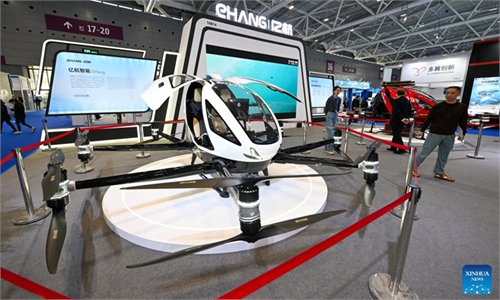
The EH216-S self-developed passenger-carrying unmanned aerial vehicle Photo: Courtesy of EHang Holidings Ltd
EHang Holdings, a Chinese urban air mobility technology platform company, obtained a production certificate for its EH216-S autonomous electric vertical takeoff and landing (eVTOL) aircraft from the Civil Aviation Administration of China (CAAC), a world first, on Sunday.
The certificate is a critical document to ensure that each aircraft and its components meet the approved type design and safety requirements. The certificate indicates that EHang has established a mass production quality management system that meets the CAAC's airworthiness requirements, providing a guarantee for commercial operations.
"EHang now has the capacity to make 600 aircraft per year. Over the past few years, the company has received hundreds of domestic and foreign orders. The certificate means that the company can officially commence large-scale production," said He Tianxing, a vice president of EHang.
"Ehang will initially enter the markets for aerial tours and urban sightseeing, allowing more people to understand and experience low-altitude flights. It will gradually expand into transportation connectivity, emergency rescue and urban commuting," He told the Global Times.
China's low-altitude economy has been included under the framework of new quality productive forces, according to the Government Work Report for 2024.
Despite its late start compared with some developed countries, China has vast potential in the low-altitude economy.
For example, China held a 49.1 percent share of the global drone market as of the end of 2022. As of end-2023, the scale of China's low-altitude economy exceeded 200 billion yuan ($27.7 billion), with about 2,000 autonomous electric aircraft manufacturers and nearly 20,000 operating enterprises.
The Ministry of Industry and Information Technology and three other departments have jointly issued a plan proposing that by 2030, China will establish a new model for the development of the general aviation industry characterized by high-end, intelligent and green features.
This model will support and ensure the safe and efficient operation of various networks, including passenger transportation, drone delivery and low-altitude production operations, fueling growth in the low-altitude economy and forming a market of more than 1 trillion yuan.
China's advantages in the development of low-altitude economy mainly include large market demand, strong technical strength and a good industrial foundation, Hong Yong, an expert at the Digital Real Economies Integration Forum 50, told the Global Times on Monday.
With the continuous progress of technology and the expansion of application scenarios, low-altitude economy will play a greater role in logistics, agriculture, emergency rescue, urban management and other fields, and it is expected to become a new engine to pull economic growth, Hong noted.

